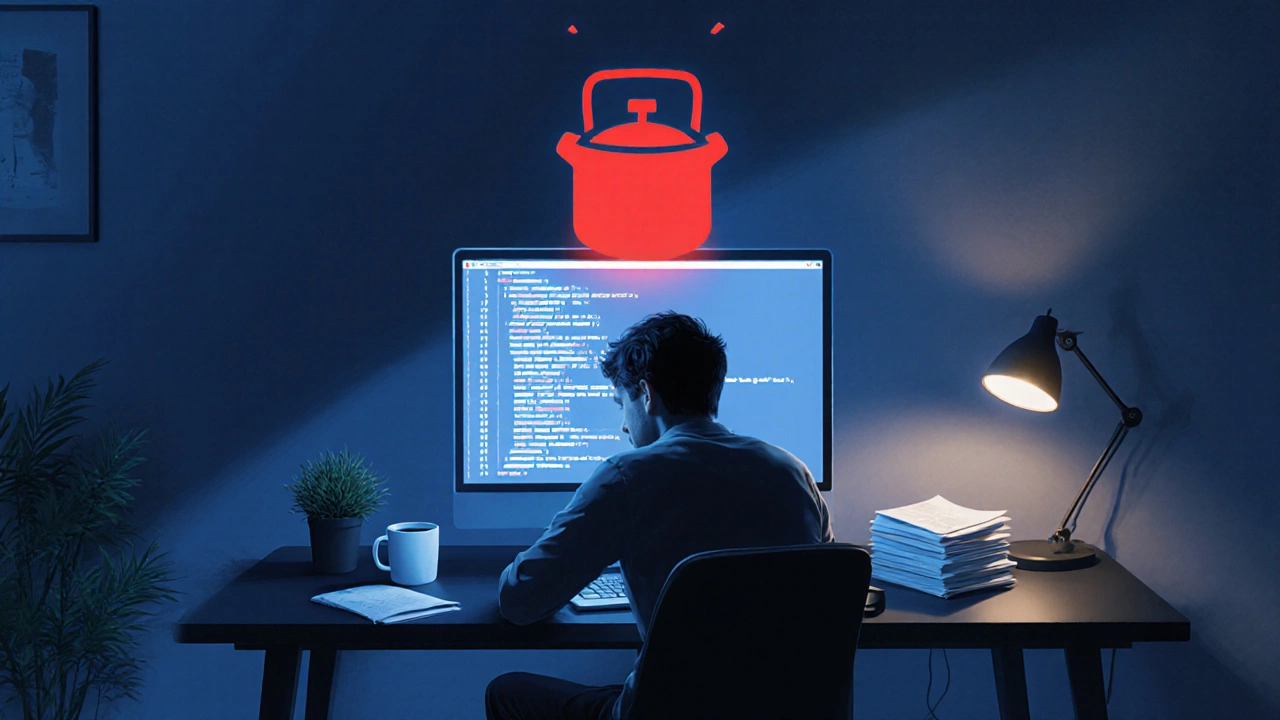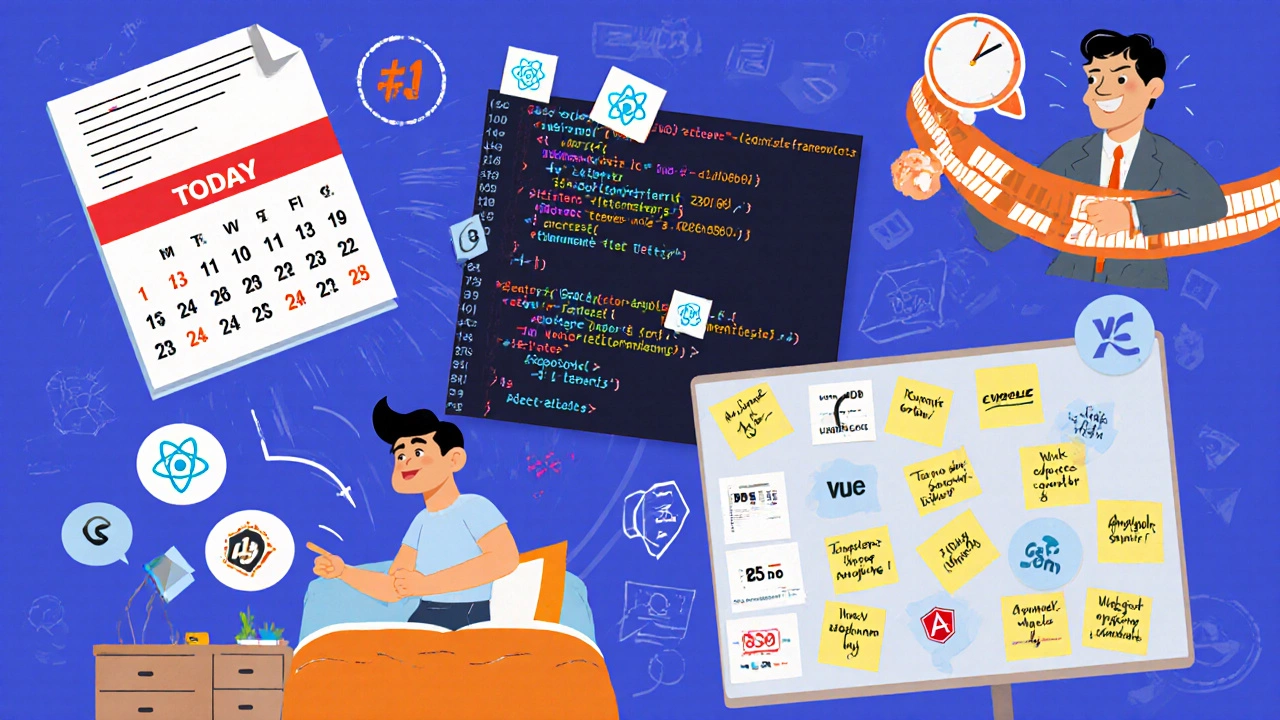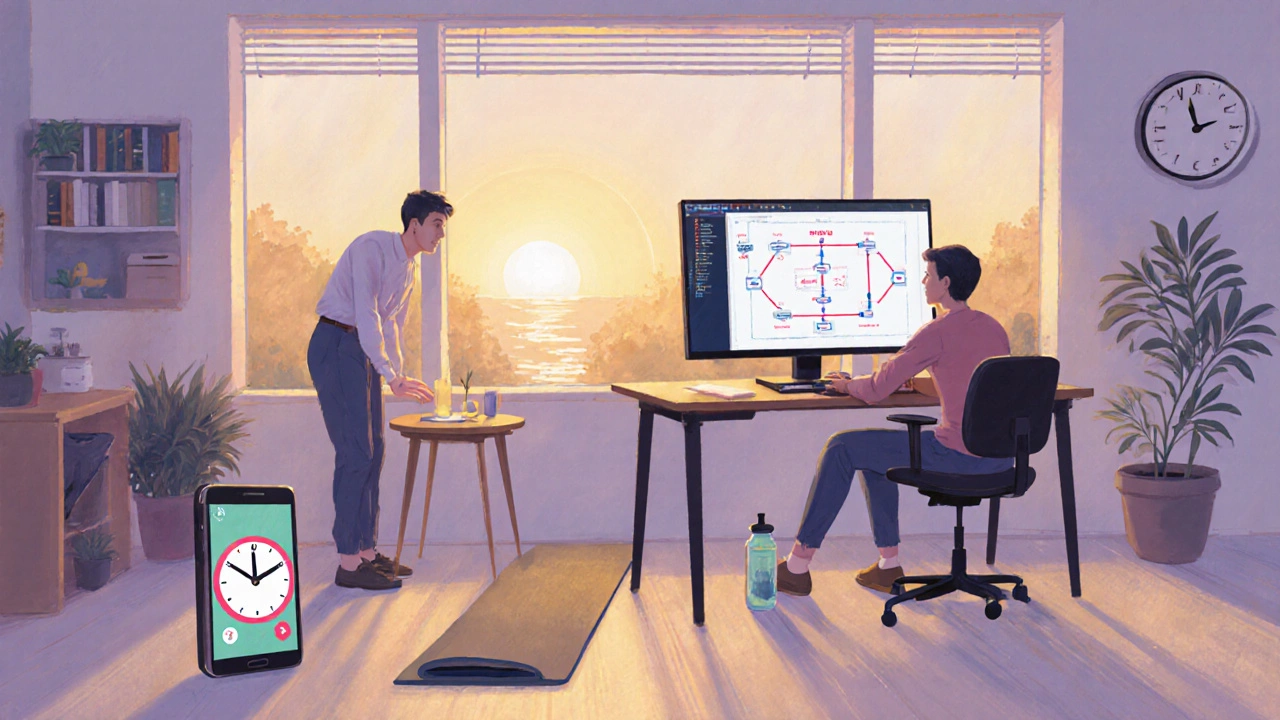Is Coding a Stressful Job? Facts, Causes & Coping Strategies

Coding Stress Assessment Tool
Assessment Overview
This tool evaluates your stress level as a software developer based on common workplace factors. Answer honestly to get personalized insights and coping strategies.
Your Stress Assessment Results
Personalized Coping Strategies:
When we talk about coding is the process of writing instructions for computers using programming languages, the image that pops up is often a quiet desk, a laptop, and a line of code that finally runs. Yet many developers wonder: is this really a low‑key gig or a hidden pressure cooker?
Why the Stress Debate Matters
Understanding coding stress isn’t just about personal comfort. High stress can lead to burnout a state of emotional, physical, and mental exhaustion caused by prolonged pressure, missed deadlines, and even career switches. Companies lose talent, and individuals suffer from anxiety, sleep problems, and reduced productivity. So answering the question helps both workers and employers make smarter choices.
Key Stressors for Software Developers
Let’s break down the most common triggers that make coding feel like a pressure cooker.
- Unrealistic deadlines - When a project manager pushes a release date far ahead of realistic estimates, developers scramble to meet it, often skipping testing and refactoring.
- Complex debugging sessions - debugging the systematic process of finding and fixing bugs in code can stretch for hours, especially in legacy codebases without proper documentation.
- Rapid technology churn - New frameworks appear weekly. Keeping skills up‑to‑date feels like a full‑time job on top of the regular one.
- Remote work isolation - While remote setups offer flexibility, they can also erase the informal support network that an office provides.
- Agile sprint pressure - Agile methodology an iterative approach to software development that emphasizes incremental delivery is great for adaptability, but the cadence of two‑week sprints can feel relentless.

How Coding Stress Compares to Other Tech Roles
| Role | Typical Stress Score (1‑10) | Main Drivers |
|---|---|---|
| Software Developer | 7.2 | Deadlines, debugging, tech churn |
| Data Scientist | 6.5 | Data quality, stakeholder expectations |
| Project Manager | 6.8 | Scope creep, resource allocation |
| UX Designer | 5.9 | User research deadlines, iteration cycles |
Signs You Might Be Heading Toward Burnout
If you recognize several of these symptoms, it’s a red flag that coding stress is turning into burnout.
- Constant fatigue even after a weekend off.
- Loss of enthusiasm for new projects.
- Frequent headaches, eye strain, or neck pain.
- Increasing irritability with teammates.
- Difficulty concentrating on code reviews or test cases.
Remember, burnout a state of emotional, physical, and mental exhaustion caused by prolonged pressure doesn’t happen overnight-it builds up.
Practical Ways to Reduce Coding Stress
Below are evidence‑based tactics that developers and managers can adopt today.
- Set realistic sprint goals - Break tasks into bite‑size pieces and involve the whole team in estimation. Studies from the IEEE 2024 conference show that teams using planning poker reduce overtime by 30%.
- Automate repetitive tasks - Use CI/CD pipelines, linters, and code generators. Automation cuts manual debugging time by up to 25% according to a 2023 Stack Overflow survey.
- Schedule regular “no‑meeting” blocks - Protect deep work periods. A Google internal study found a 15% boost in code quality when engineers had uninterrupted 2‑hour windows.
- Practice active learning - Instead of trying to master every new framework, allocate a fixed “learning hour” each week. This limits the feeling of falling behind.
- Prioritize physical health - Stand‑up desks, short walks, and eye‑exercise breaks lower cortisol levels, the body’s stress hormone.
- Foster peer support - Pair programming and code reviews create a safety net. When a teammate spots a bug early, the overall stress drops.
- Leverage remote‑work best practices - Use video calls for quick check‑ins, maintain a dedicated workspace, and set clear boundaries for “offline” time.

When to Seek Professional Help
If stress starts affecting sleep, relationships, or overall quality of life, it’s time to talk to a mental‑health professional. Many tech companies now offer Employee Assistance Programs (EAPs) that cover counseling sessions. Early intervention can prevent long‑term burnout.
Is Coding Right for You?
Before you decide whether to pursue a coding career, ask yourself these reflective questions:
- Do I enjoy problem‑solving more than the pressure of deadlines?
- Can I set boundaries around work hours and still deliver?
- Am I comfortable with continuous learning and occasional frustration?
If the answer is mostly yes, coding can be a rewarding path-just be proactive about managing stress.
Frequently Asked Questions
Is programming more stressful than other tech jobs?
According to the 2025 Tech Stress Survey, software developers score slightly higher (7.2/10) than data scientists (6.5) and project managers (6.8). The main reasons are tight deadlines and frequent debugging sessions, but individual experiences vary.
Can remote work reduce coding stress?
Remote work can cut commute stress, but it may increase isolation. Setting clear communication norms and scheduling regular video check‑ins helps balance the trade‑off.
What are early warning signs of burnout?
Persistent fatigue, loss of enthusiasm, physical aches, irritability, and difficulty focusing are common indicators. If you notice multiple signs, consider adjusting your workload or seeking professional advice.
How does Agile affect stress levels?
Agile provides regular feedback and short cycles, which can reduce uncertainty. However, the rapid sprint cadence can feel relentless if teams don’t set realistic story points.
Are there tools that help lower coding stress?
Yes. Continuous Integration/Continuous Deployment (CI/CD) pipelines, static code analyzers, and automated testing frameworks reduce manual debugging time, freeing mental bandwidth for creative problem‑solving.